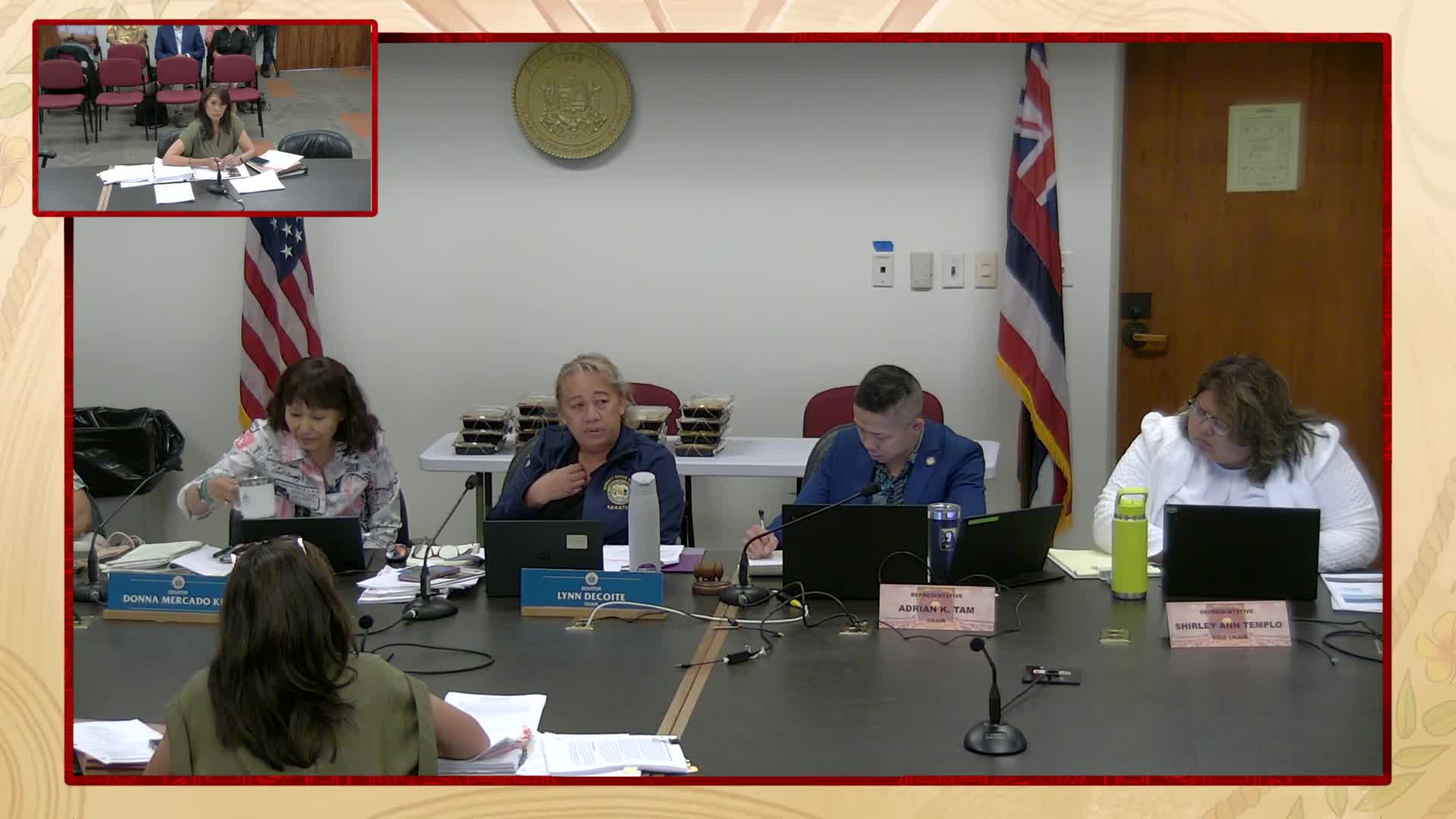Senate panel discusses flaws in Hawaii's Destination Management Action Plan process
June 24, 2025 | House Committee on Tourism, House of Representatives, Legislative , Hawaii
Thanks to Scribe from Workplace AI , all articles about Hawaii are free for you to enjoy throughout 2025!

This article was created by AI using a video recording of the meeting. It summarizes the key points discussed, but for full details and context, please refer to the video of the full meeting. Link to Full Meeting
As discussions unfolded, one participant expressed frustration over the involvement of political figures in the DMAP process, arguing that community voices should take precedence over political agendas. "It should have been driven from the community up and not the governing body going down," they stated, emphasizing a desire for local input in shaping tourism policies. This sentiment resonated with many attendees, who echoed the need for a more community-focused approach to tourism management.
The meeting also revealed critical issues surrounding the audit of the DMAP, with questions raised about the sources of information used in the evaluation. Participants noted that the audit process lacked engagement with key project managers and external contractors, raising concerns about the thoroughness and accuracy of the findings. "The process was flawed in the beginning," one speaker remarked, calling for a reevaluation of how priorities are set and funds appropriated for tourism initiatives.
Amidst the discussions, the role of the Hawaii Tourism Authority (HTA) came under scrutiny. Some lawmakers suggested that the HTA's dual responsibility for marketing and stewardship might be contributing to confusion and inefficiency. "Should we maybe contemplate in the future that we separate these two things out?" one senator proposed, advocating for a clearer division of responsibilities between marketing and destination management.
Despite the challenges, there was a recognition of the HTA's past successes in attracting millions of visitors to Hawaii. However, the growing criticism of overtourism has prompted a shift in focus towards sustainable practices and community engagement. "We need to do destination stewardship, destination management, and bridge the two together," one HTA representative asserted, highlighting the importance of interagency collaboration in addressing the pressing issues facing Hawaii's tourism sector.
As the meeting concluded, it was clear that the path forward would require a concerted effort to rebuild trust with local communities and establish clearer guidelines for tourism management. With the DMAP process deemed rushed and in need of refinement, stakeholders left the session with a renewed commitment to fostering a more inclusive and sustainable approach to tourism in Hawaii. The discussions underscored the urgency of addressing these challenges as the state continues to navigate the delicate balance between economic growth and environmental stewardship.
Converted from TOU/EDT Joint Info Briefing - Mon Jun 23, 2025 @ 10:00 AM HST meeting on June 24, 2025
Link to Full Meeting
Comments
View full meeting
This article is based on a recent meeting—watch the full video and explore the complete transcript for deeper insights into the discussion.
View full meeting
